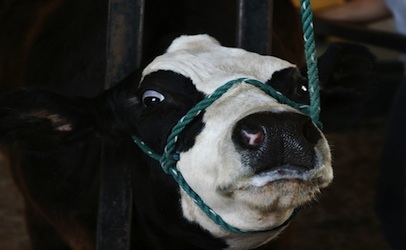A second possible case of bovine spongiform encephalopathy (BSE), or Mad Cow disease, in Brazil is coming in for public scrutiny much sooner than the first, which was discovered in 2010. Brazil’s Ministry of Agriculture says it is investigating why an animal with symptoms of “nerve disease” collapsed at a slaughterhouse in the state of Mato Grosso.  This report stands in contrast to the 2010 BSE incident, where it took two years before the existence of an investigation was made public. More than a dozen countries temporarily banned Brazilian beef over the delayed report of that BSE incident. However, in 2013, the powerful World Organization for Animal Health (OIE) rated Brazil as having negligible status for BSE and ruled that the single BSE case did not put the country’s cattle herds or its trading partners at risk. In the 2010 incident, the cow did not die of BSE, but was positive for the proteins that cause the disease. Brazil says in the most recent case, the cow suspected of BSE was found slumped on the floor of the slaughter facility. The animal was put down and samples of nervous tissue collected for laboratory analysis. Besides BSE, nerve diseases could involve botulism, rabies or other possibilities. The animal was more than 10 years old, making it less likely that BSE is involved because it usually strikes cows that are two to seven years old. Brazil claims the 2010 case was not a “classic” case of BSE, and officials there are hoping that remains the case. The ministry says that nothing from the downed animal reached the human or animal food chain and that all hazardous materials were incinerated. Animals the cow came in contact with are being identified and quarantined. Tissue samples were sent to the Animal Health and Veterinary Laboratory in Weybridge, England, and case files copied to OIE. Mato Grosso is Brazil’s largest beef-exporting state.
This report stands in contrast to the 2010 BSE incident, where it took two years before the existence of an investigation was made public. More than a dozen countries temporarily banned Brazilian beef over the delayed report of that BSE incident. However, in 2013, the powerful World Organization for Animal Health (OIE) rated Brazil as having negligible status for BSE and ruled that the single BSE case did not put the country’s cattle herds or its trading partners at risk. In the 2010 incident, the cow did not die of BSE, but was positive for the proteins that cause the disease. Brazil says in the most recent case, the cow suspected of BSE was found slumped on the floor of the slaughter facility. The animal was put down and samples of nervous tissue collected for laboratory analysis. Besides BSE, nerve diseases could involve botulism, rabies or other possibilities. The animal was more than 10 years old, making it less likely that BSE is involved because it usually strikes cows that are two to seven years old. Brazil claims the 2010 case was not a “classic” case of BSE, and officials there are hoping that remains the case. The ministry says that nothing from the downed animal reached the human or animal food chain and that all hazardous materials were incinerated. Animals the cow came in contact with are being identified and quarantined. Tissue samples were sent to the Animal Health and Veterinary Laboratory in Weybridge, England, and case files copied to OIE. Mato Grosso is Brazil’s largest beef-exporting state.
Sponsored by Marler Clark
